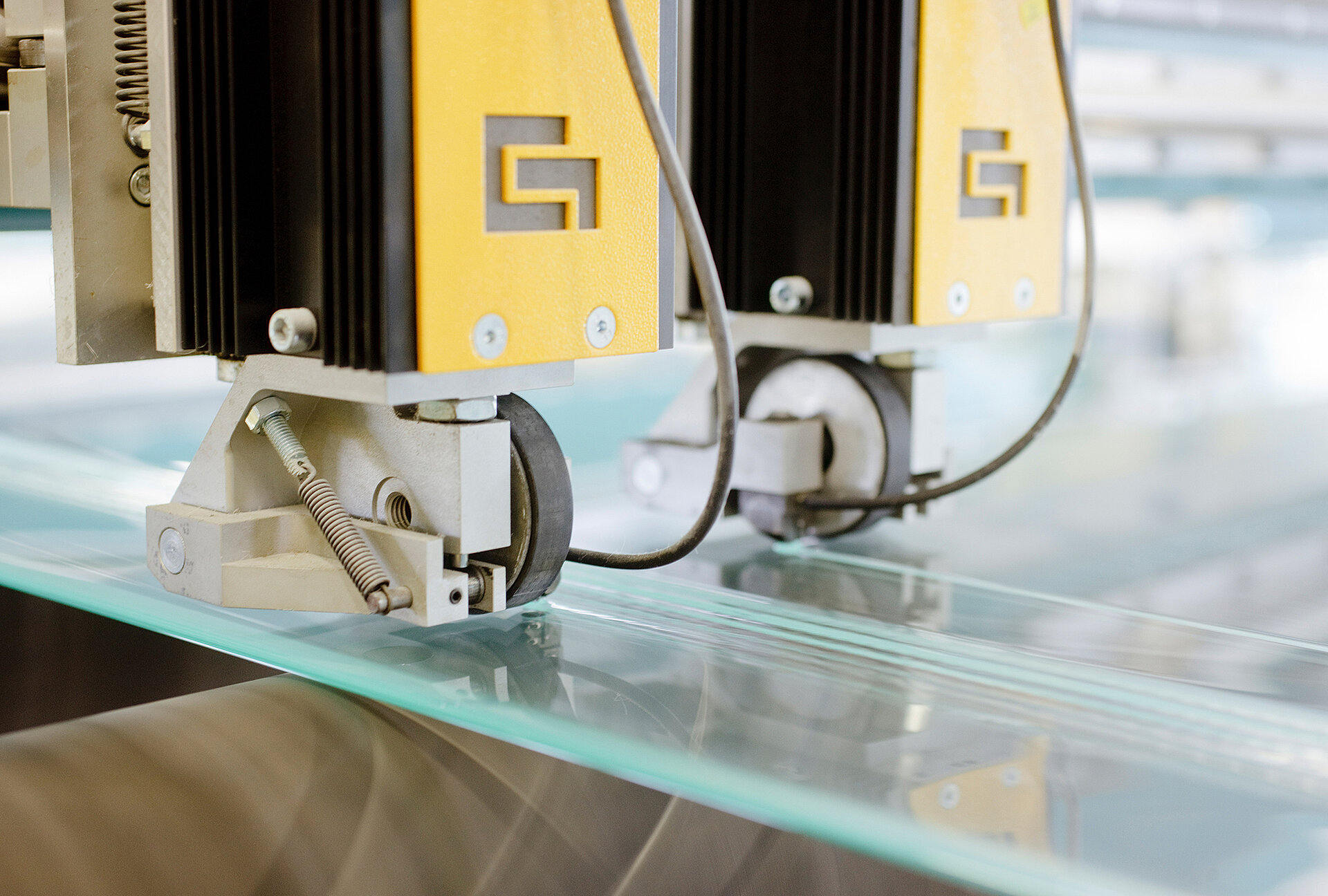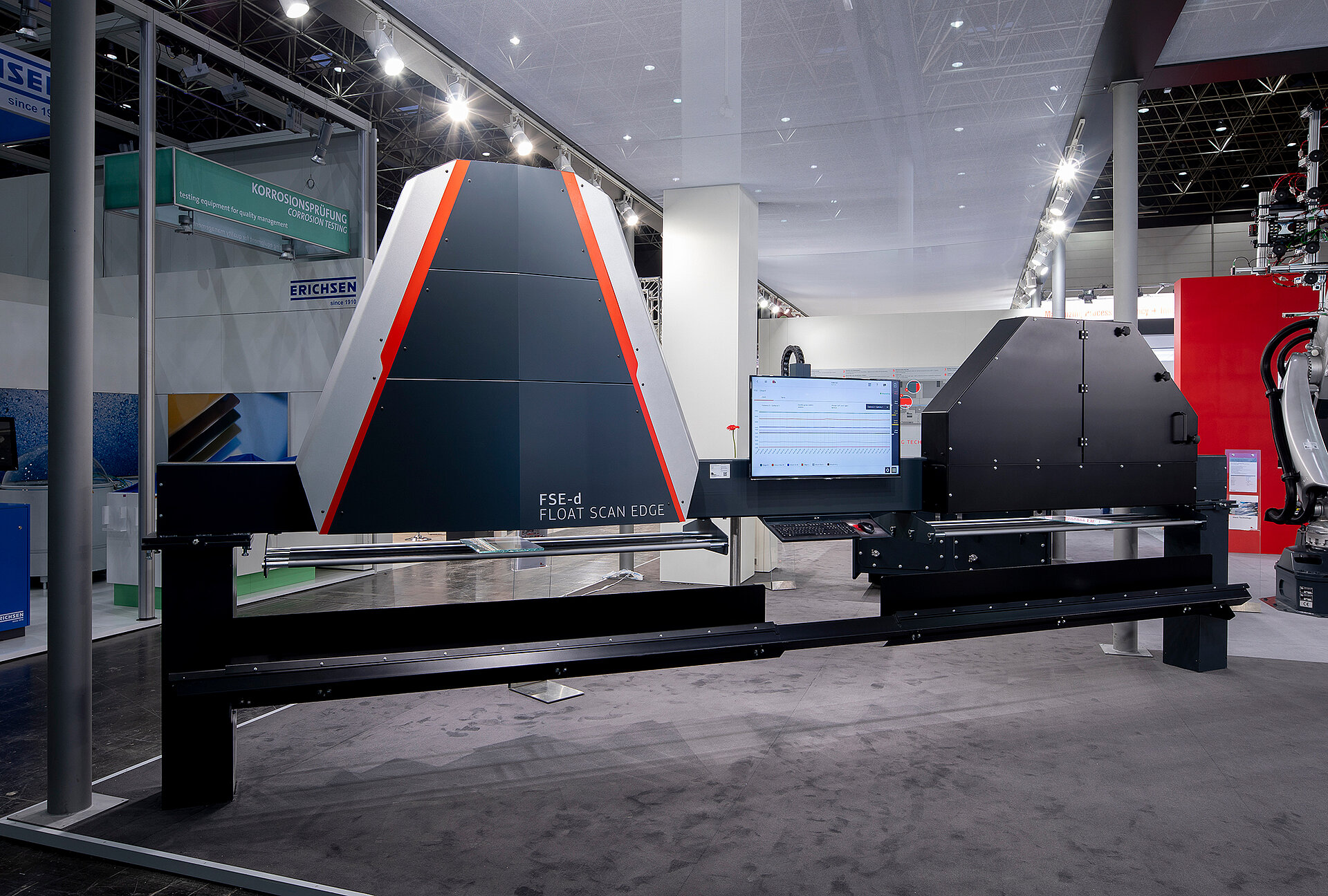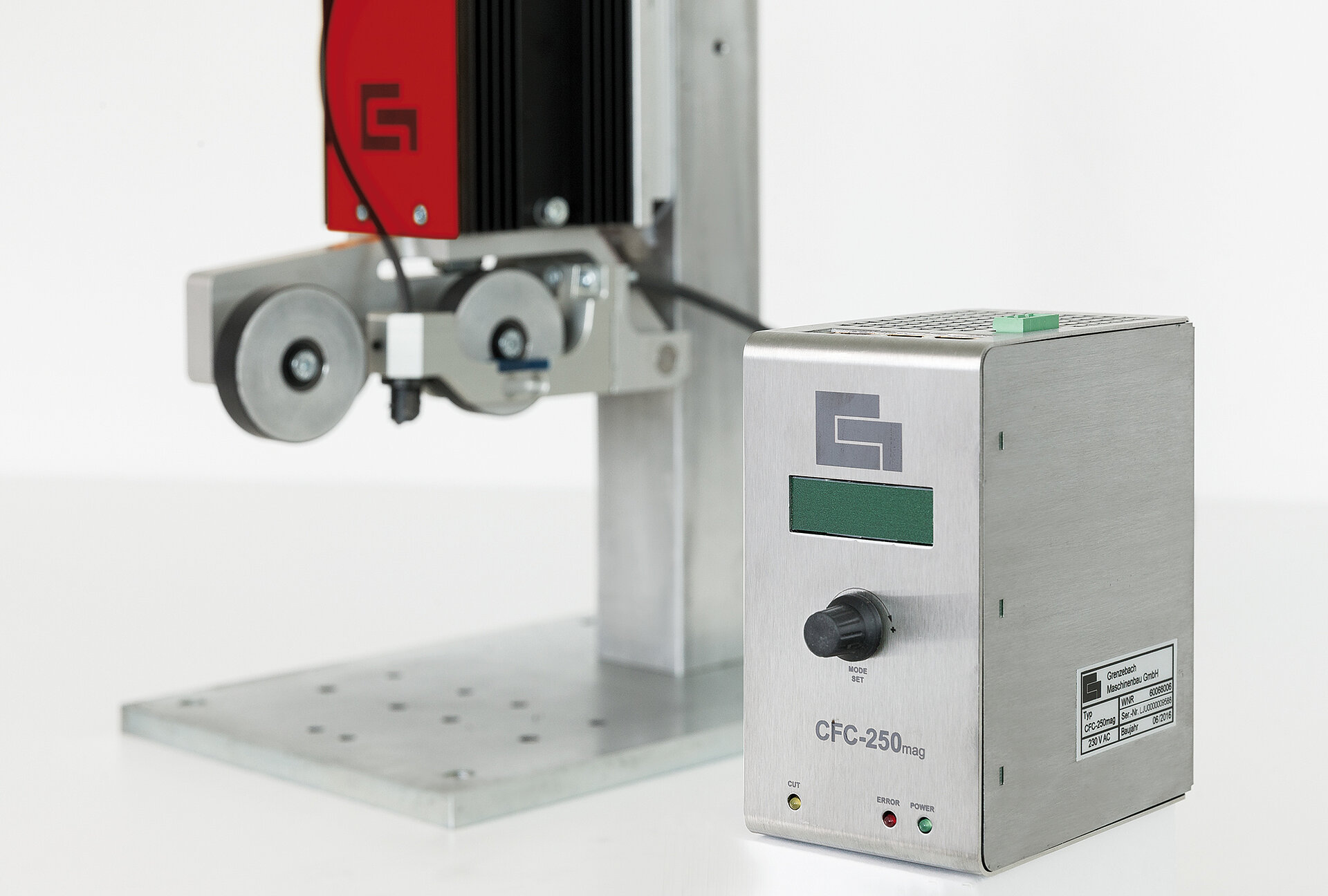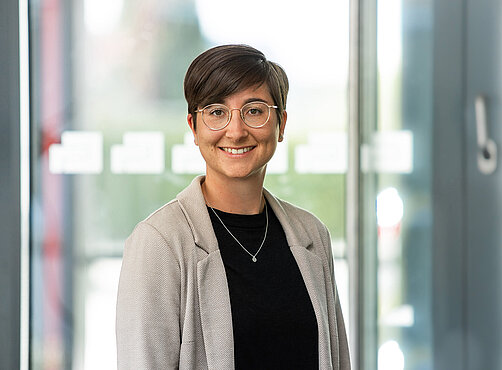Camera system Float Scan Edge-digital by Grenzebach: An inspection system with crystal-clear value added
Precision for the cut-to-size optimization system
The Float Scan Edge system extends over the complete width of the glass ribbon - and detects with two single cameras constantly providing useful information: The system detects the accurate position of the glass ribbon on the conveyor system two outer edges of the glass ribbon and more precise position of the so-called knurl marks on the glass ribbon. The limits of the glass ribbon can now be detected with even more precision. “This helps to precisely calculate the maximum useful width of the available glass ribbon and to transfer it to the cut-to-size optimization system. The core piece at the cold end of the float line works even more effectively and the net width of the glass ribbon rises. By means of integration of all supplied information via the Grenzebach Application Server, the data can be interconnected and analyzed in the overall inspection. Concrete factors for further optimization are still available”, explains Peter Seidl, Product Manager Business Unit Glass at Grenzebach.
The developed camera system includes three decades of experience regarding this task. Especially as the position of the knurl mark can be determined even more accurately and more reliably, it is possible to come closer to the knurl marks when cutting. The rejects produced are minimized and the net glass ribbon gets wider. In short: The new camera brings more square meters of glass and the yield rises.
The new Float Scan Edge-digital can be used for glass ribbon widths of 1700 to 6900 mm; and can also be used for color glass with hardly distinguishable features in the glass.
The system supplies the following information:
- Position of the glass ribbon and its outer edges
- Glass ribbon drift and wander
- Inner and outer edge position of the knurl marks
- Evaluation of the knurl mark width
- Evaluation of the gross and net glass ribbon width
- Optical distortion in position and expansion of the top roller and edge
For the product up-date FSE-d, the latest-version hardware and picture processing software will be used for development. Three examples:
- The work with the most recent digital cameras doubled the resolution with 1920x per detection width.
- The temperature range is significantly extended.
- Communication is now possible via network via GigaEthernet – over large distances.
The higher reach of data transmission contributes to an increased operational safety. Increased robustness of the system with respect to failures is another advantage.
Save, archive and send pictures
“The software tools for picture processing allow among other things an automatic calibration of the system. This allows to significantly support the maintenance staff by means of the assistance system in the case of recurring tasks”, adds Peter Seidl. The system detects increasing pollution and provides hints to maintenance at an early stage. Besides electronics, the mechanical system was significantly improved as well. For this reason the optical path for the detection procedure was changed and the camera directly faces onto the glass surface. Adjustment and cleaning of deflecting mirrors are no longer necessary; another significant plus in the maintenance comfort.
FSE – decisive for the cutting result
The use of Float Scan Edge digital is a concrete support in process inspection for production and cutting technology and supplies important information for product and process supervision, quality control and back-tracking of sequences and settings. Seidl: “Offering a hand-tight value added for our customers – that is the most important motivation with the development of product up-dates. The Float Scan Edge contributes to more yield, higher qualities and resource saving for new and existing equipment.”
Gathering, analyzing and the usage of data
For the experts of production and processing technology, the new camera system is also a constituent module for further networking in the digital glass production. “The Float Scan Edge clearly contributes to gather, use and analyze information and data, created in the value-added chain of glass production.” Of course, the FSE-d can be integrated into the IIoT (Industrial Internet of Things), in order to digitally show the complete process of production for the warehouse down to the user. For this purpose, SERICY, a local IIoT platform was developed in-house for all industrial applications - with continuous expandability to Cloud Computing.
Simple up-grading to the digital system
“To be a strong partner to our customers over the complete life cycle also means to us to take the situation of the existing equipment into consideration with every new development”, says Florian Nagler, Head of Global Service Sales at Grenzebach. It goes without saying that the advantages and possibilities of FSE-d are also available to those customers, working with the well-proven analogous predecessor model for already many years. The solution: an uncomplicated service up-date kit, including all components required for the up-grade from analog to digital. The housing of the camera system is conserved, only the electronic components and the software are replaced. This allows to the existing customer to also profit from the new highly efficient and long-lived illumination.
Remote capacity down to the separate camera
Make production technology as long-lived as possible and support with hand-tight service: FSE-d offers remote access down to the single camera. This is available, lived service according to the understanding of Grenzebach. “We develop service upon the principles of classic product management – in order to extend our customers' equipment operating lifetime, to generate additional value and to implement suggestions and needs of our customers at an early stage by means of intensive exchange.” For this purpose, hardware, software and communication inseparably interact. For the communication and collaboration with the customers, Grenzebach pulls out all the digital stops - and besides every equipment operator has a central contact person in service.
On the right side in the picture you see the well-proven analogous predecessor model, which can be equipped with an uncomplicated service up-date kit. The housing of the camera system is conserved, only the electronic components and the software are replaced. And immediately, all functionalities of the development are completely available.







